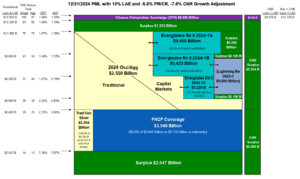2023 Mazda CX-50 Review | 50 really is greater than 5
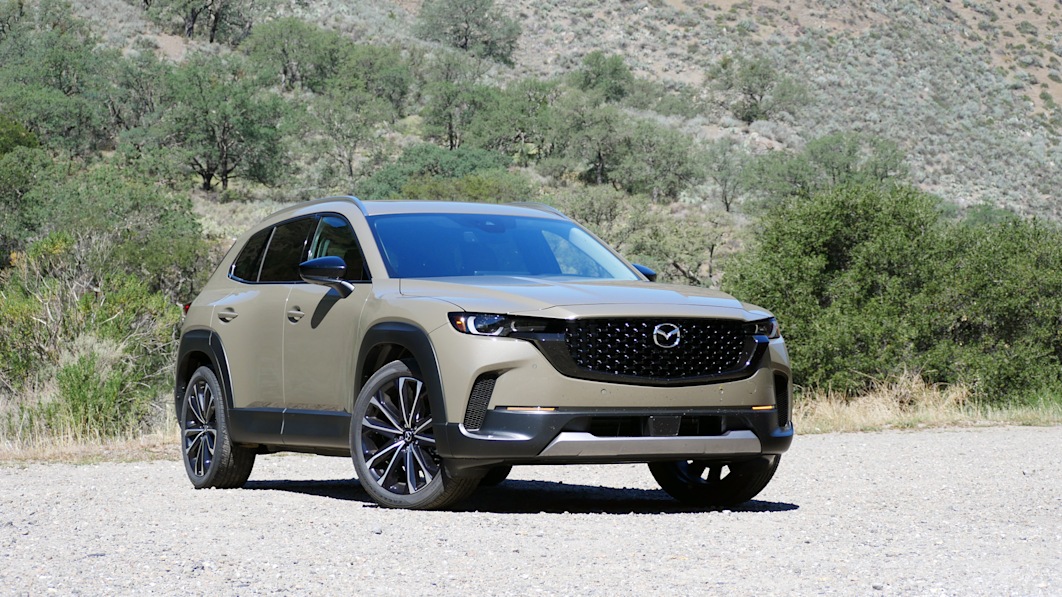
Pros: Engaging and refined driving experience; luxurious interior; strong turbo engine; good looks
Cons: No hybrid available; infotainment system won’t be for everyone
So there’s now a 2023 Mazda CX-50. But there’s still a CX-5. And they’re both compact SUVs that offer the same engines and are only about $1,000 apart. Alrighty, then. So what do you get along with that zero in the name?
Well, although both technically belong to the compact SUV segment, the CX-5 is on the small end, while the CX-50 is one of the bigger offerings. At least on the outside, where the CX-50 measures a considerable 6.7 inches longer and 3.1 inches wider than its sibling, and is an inch higher off the ground. Those don’t really translate to a larger interior – you’ll find back-seat legroom and cargo space virtually the same. Instead, those larger dimensions result in the CX-50 feeling more substantial and refined, and a bit more like a midsize SUV (the Chevy Blazer is broadly comparable). The extra ground clearance also speaks to the CX-50’s more rugged capabilities, which in concert with a unique-for-Mazda Off-Road drive mode, make it more capable of tackling unpaved roads. Basically, it’s better for taking long road trips to outdoorsy vacation spots.
At the same time, the CX-50 is every bit the engaging, driver-focused vehicle to drive as the CX-5 and every other Mazda. It’s also similarly luxurious, boasting elevated materials quality and a tasteful minimalist design aesthetic with a few extra angles here and there to correspond with the CX-50’s slightly more rugged vibe. Downsides? The knob-and-display infotainment system won’t be for everyone, even if Apple CarPlay and Android Auto can be operated by touch, and tech offerings in general aren’t as robust as those of some rivals. Mazda also doesn’t offer a hybrid version (though few competitors can match its muscular turbo engine upgrade).
In total, we think the Mazda CX-50 is more appealing than the CX-5, which was already one of our top compact SUVs. Turns out 50 is indeed greater than 5.
Interior & Technology | Passenger & Cargo Space | Performance & Fuel Economy
What it’s like to drive | Pricing & Trim Levels | Crash Ratings & Safety Features
What’s new for 2023?
The CX-50 is an all-new model for 2023.
What are the CX-50 interior and in-car technology like?
The interior design is consistent with the rest of the Mazda line, but the blockier, upright air vents add a slightly more muscular vibe consistent with the exterior. Materials quality is similarly elevated, with padded, soft-touch surfaces and high-quality switchgear. Turbo trim levels get soft (and convincing) simulated leather on the dash and doors with contrast stitching in a unique criss-cross pattern. It’ll be hard to find a nicer cabin than this for the money.
All but the base CX-50 comes with a 10.25-inch widescreen display. Most functions, including selecting a radio station, making a Bluetooth phone call or operating the navigation system, are done with the control knob and supporting menu buttons on the center console. This generally works well and helps keep your eyes on the road. However, the standard Apple CarPlay and Android Auto connectivity can be a royal pain to operate with a knob-and-display system, so Mazda now allows those to be operated with touchscreen capability. But only for Apple/Android, nothing else. It’s a decent compromise, but we admit it won’t be for everyone, and it’s also quite the reach to the touchscreen.
Another potential technology shortfall is the gauges. While the central gauge is a screen that can change its design and provide information, it’s inherently small and flanked by analog gauges. We’re traditionalists who like old-fashioned gauges, but we know there’ll be those who’ll like the big, colorful full-width offerings of Kia, Hyundai and Nissan.

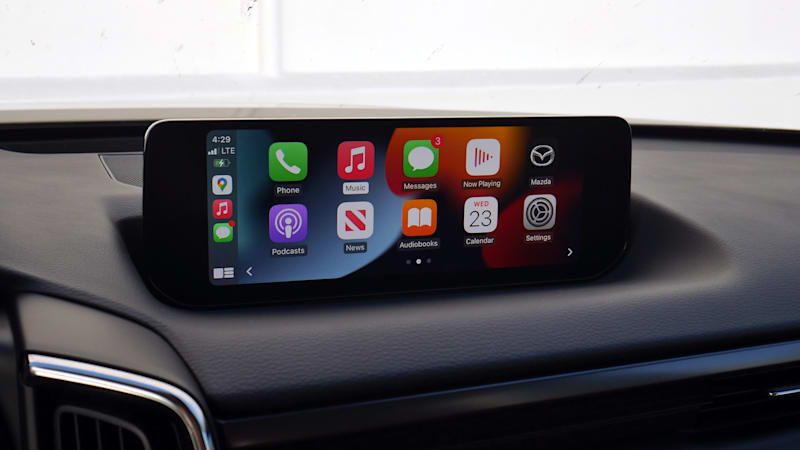
How big is the CX-50?
The CX-50 is one of the biggest compact SUVs on the outside, but only an average-sized one inside. Blame, or thank, the longer front end and general proportions intended to prioritize a more visually appealing small SUV. There’s really nothing comparable in the regular compact SUV segment, but the Genesis GV70 comes close in the luxury realm. The Chevy Blazer isn’t too far off, either.
In the end, though, the CX-50 offers plenty of family-friendly legroom – you’ll still find more than a Toyota RAV4, for instance. Cargo space is only a smidge better than the CX-5 at 31.4 cubic-feet, which can manage this much stuff in its cargo area, but that figure still makes it considerably less proficient at hauling stuff than the RAV4, Honda CR-V, Hyundai Tucson and, well, most compact SUVs at this point. Also, despite the CX-50’s outdoor adventure mission, it only has flush roof rails versus the more capable and versatile raised roof rails found on other outdoor adventurey SUVs like the Kia Sportage X-Line, Toyota RAV4 Adventure and every Subaru Outback.
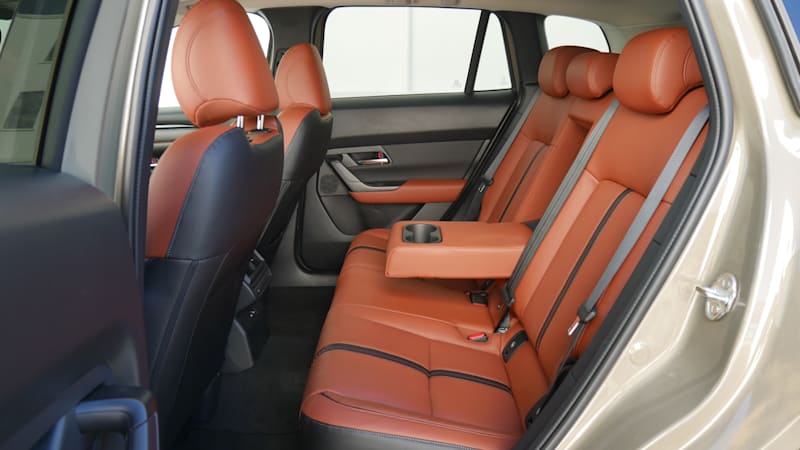

What are the CX-50 fuel economy and performance specs?
The CX-50 comes with the exact same powertrain options as the CX-30 and CX-5, including its standard six-speed automatic transmission and all-wheel-drive system.
The standard engine is a 2.5-liter inline-four that produces 187 horsepower and 186 pound-feet of torque. It returns 24 mpg city, 30 mpg highway and 27 mpg combined. This is comparable to the similarly powered Subaru Outback and Kia Sportage.
The optional engine is a 2.5-liter turbocharged inline-four boasting 227 hp and 310 lb-ft of torque (it’s good for 256 hp and 320 lb-ft should you want to pump in 93 octane). Few compact SUVs offer a performance upgrade at all, let alone something that muscular. Fuel economy falls to 23/29/25, which is actually a bit better than the CX-5 with the same engine.
Unfortunately, Mazda does not offer a CX-50 hybrid.
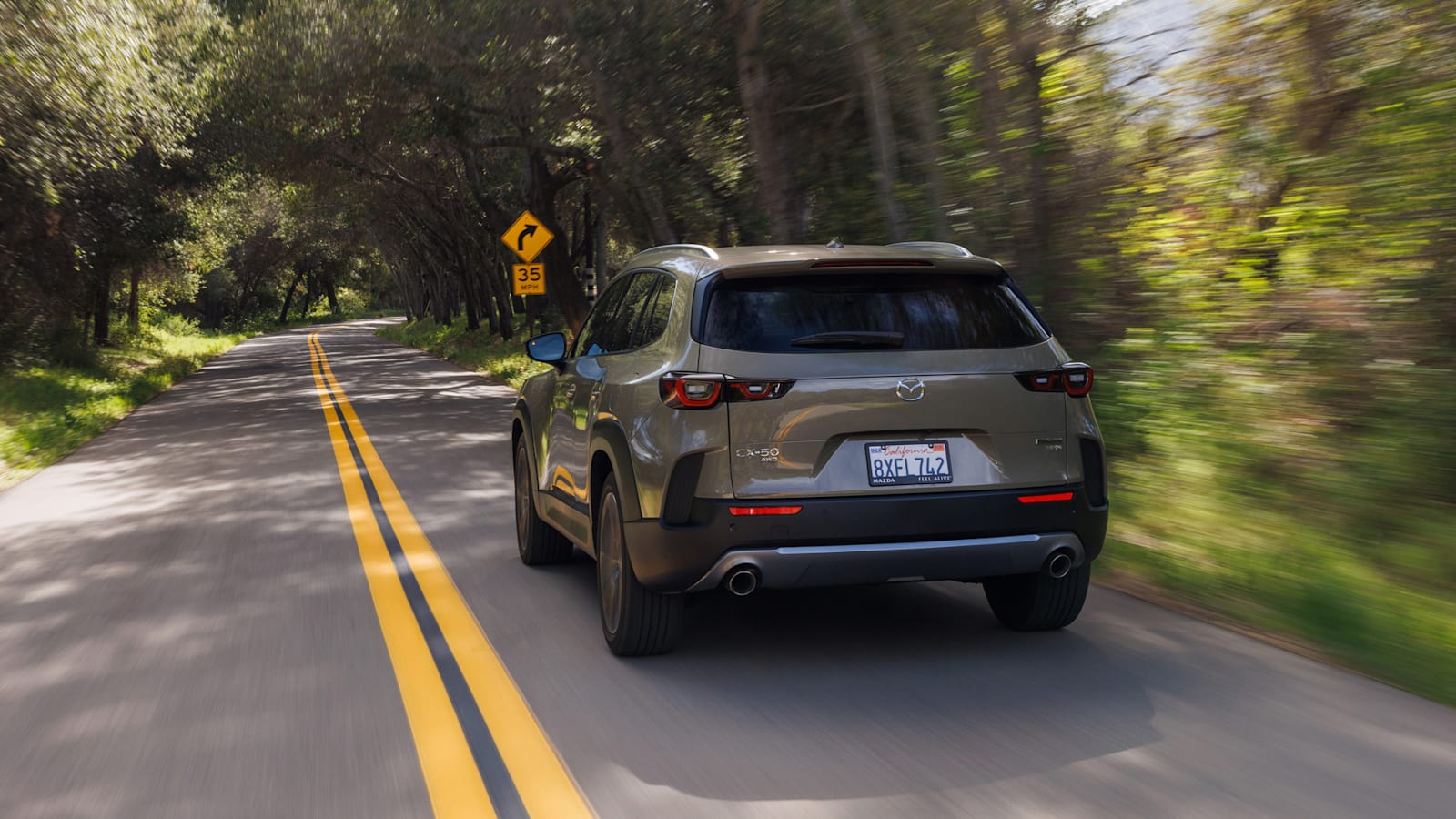
What’s the CX-50 like to drive?
The CX-50’s longer and wider footprint makes it feel more substantial and planted on the road than the CX-5 and other compact SUVs. It feels a bit more like a midsize model, especially with the turbo engine, and therefore will make a happier highway cruiser. It also showcases Mazda’s typical obsession with ensuring the primary controls and overall vehicle dynamics behave in a natural, immediate, and quite simply, exceptional way. Even the adjustable drive settings are programmed to ensure the CX-50 behaves and feels consistent regardless of conditions or driving situation … as opposed to trying to make it behave like five different cars with widely different steering and throttle responses. We wholeheartedly agree with this approach. If there’s a more enjoyable compact SUV to drive, we can’t think of it. Or it’s a far more expensive luxury model.
The turbo engine option produces far more muscular acceleration than is typically offered in the compact segment. Again, here’s where the CX-50 is more like a midsizer. Its throttle and transmission response are also spot on. We have not had a chance to test the base engine, but considering the CX-50 effectively weighs the same as the CX-5, which we have driven with the base 2.5, it should be perfectly sufficient and possess the same above-average responses.
As for its outdoor adventure readiness, the CX-50 won’t be crawling any rocks but is well suited for the dirt roads that most crossover SUV owners are bound to use. Its 8.6 inches of ground clearance with the turbo (or 8.3 with the base engine) is greater than average, though short of Subaru’s Forester and Outback. We also found the CX-50’s Off-Road mode does a commendable job of ensuring traction on loosely packed dirt, both on steep hills and higher-speed corners.
What other Mazda CX-50 reviews can I read?
2023 Mazda CX-50 First Drive Review
We take a deeper dive into the CX-50’s engineering, design and why Mazda did what they did to create a small SUV better suited to the North American market. We also get it dirty.
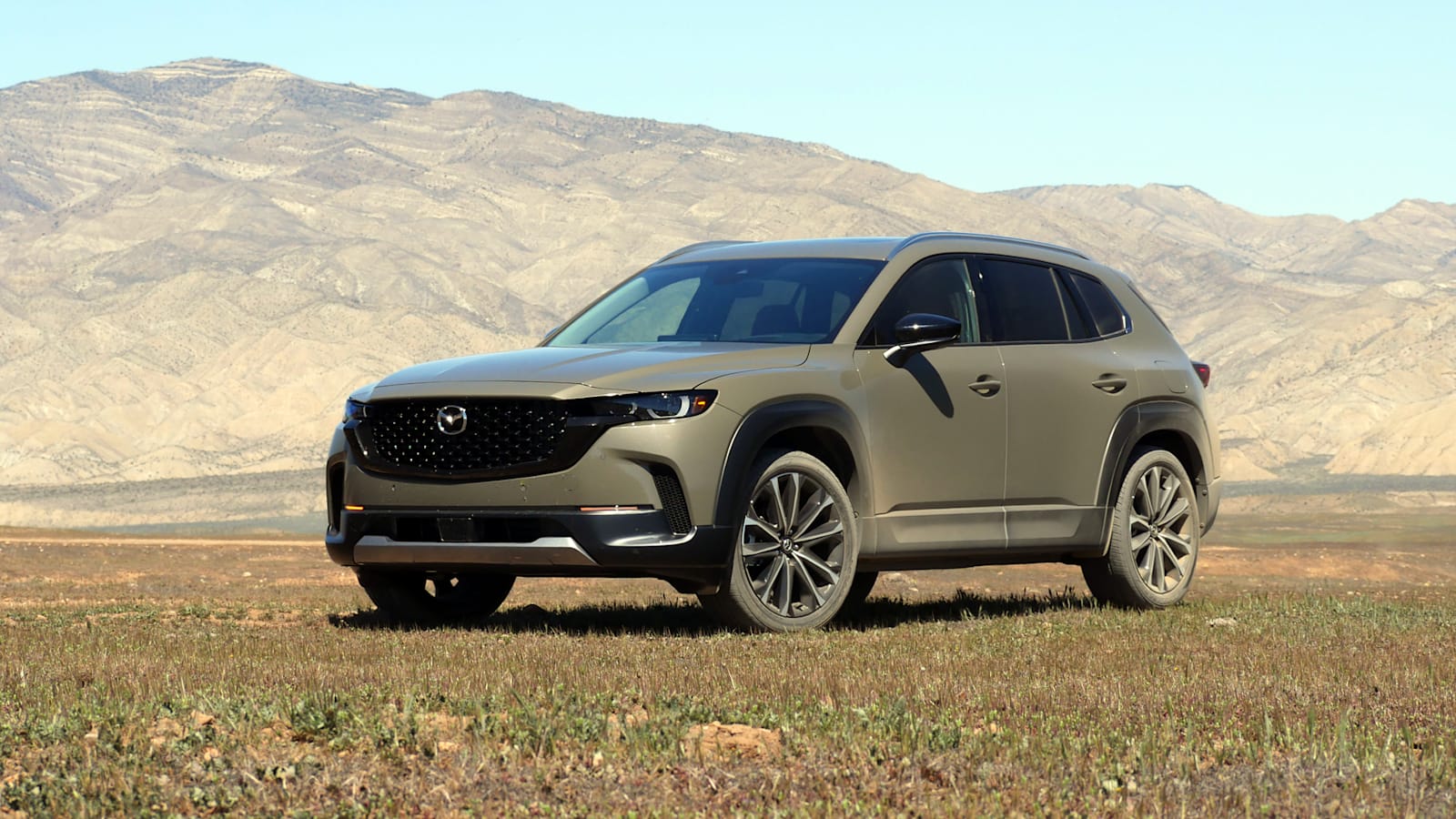
What is the 2023 CX-50’s price?
Pricing for the CX-50 starts at $28,025, including the $1,225 destination charge. All-wheel drive is standard, and the turbo engine upgrade is attained by selecting one of three trim levels. There are no options besides paint colors.
The CX-50 is unquestionably at its best and most competitive when equipped with the turbo engine. If you’re thinking of the CX-50 as an alternative to luxury vehicles or midsize SUVs, which is totally a good idea, going with the turbo is the way to go. It’s also how you get the two-tone leather and stitching shown in the photos above. Still, the base engine should provide more than sufficient power for most, and if that’s OK with you, we’d start your search with the S Preferred package: its power driver seat, heated seats and power liftgate would be hard to live without. Leather seats show up on the S Premium and all Turbo trims. Note that there will be a late-availability Turbo Meridian Edition that gets all-terrain tires, matte hood graphics and a selection of outdoor accessories. It had not been priced at the time of this writing.
You can find features, specs and local pricing for each CX-50 trim level here on Autoblog.
S = $28,025
S Select = $29,425
S Preferred = $30,725
S Preferred Plus = $33,165
S Premium = $35,625
S Premium Plus = $37,625
Turbo = $37,625
Turbo Premium = $40,775
Turbo Premium Plus = $42,775
What are the CX-50 safety ratings and driver assistance features?
Every CX-50 includes forward collision warning and automatic emergency braking with pedestrian detection, blind-spot and rear cross-traffic warning (typically optional), lane-departure warning and lane-keeping assist, a driver inattention warning system and adaptive cruise control (often optional). Mazda’s ACC does not include lane-centering steering assistance at speed, but does in stop-and-go traffic.
The CX-50 has not been crash tested by a third party at the time of this writing.


